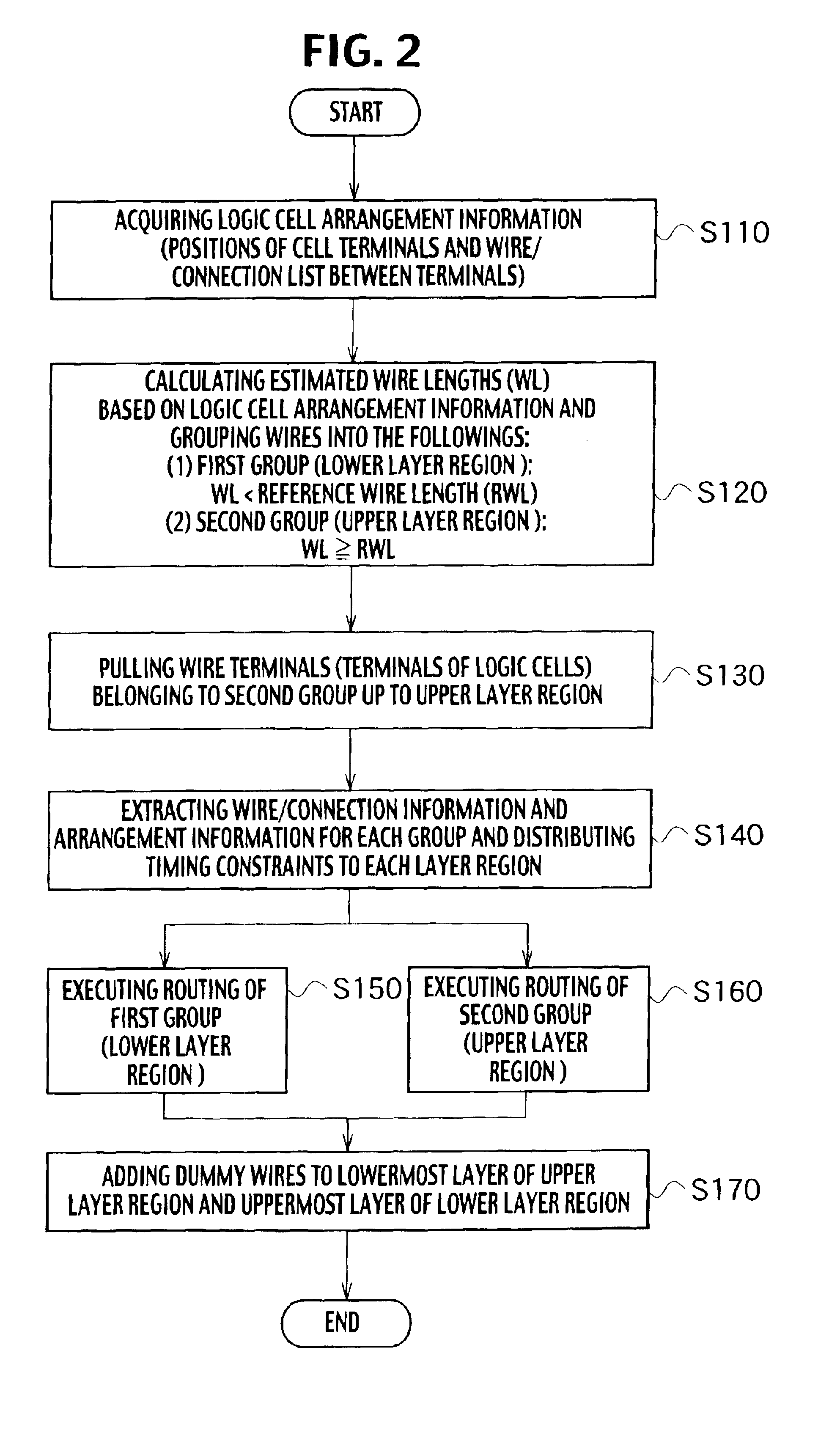Wire layout design apparatus and method for integrated circuits
a technology of integrated circuits and layout design, applied in computer aided design, program control, instruments, etc., can solve problems such as memory usage, delay in design period, and inability to enable layout,
- Summary
- Abstract
- Description
- Claims
- Application Information
AI Technical Summary
Benefits of technology
Problems solved by technology
Method used
Image
Examples
first embodiment
[0026]FIG. 1 is a constitutional view of a semiconductor design apparatus according to the present invention.
[0027]Various steps are included in design of an LSI, and the semiconductor design apparatus described here corresponds to an automatic routing CAD tool for routing between logic cells arranged on a chip. Note that it is possible for this apparatus to execute not only such routing but also layout design of logic cells and the like.
[0028]As illustrated in FIG. 1, the semiconductor design apparatus of the first embodiment includes at least the storage unit 10 having a plurality of memory regions 11, 12, 13 and the like and the CPU 20 corresponding to a computer. Note that, as illustrated in this drawing, it is preferable that a plurality of CPUs be provided in order to enable parallel routing processing. In addition, the input unit 31 and the output unit 32 are provided integrally or as external peripheral devices.
[0029]The storage unit 10 includes the plurality of memories 11 ...
second embodiment
[0063]Thereafter, the routing of each group is executed independently of the others based on the extracted wire / connection information and arrangement information (S250 to S270). Note that, with regard to the specific routing method of each group, a method similar to that in the flowchart of FIG. 6 can be used. In this case, it is desirable that three CPUs be provided in the semiconductor design apparatus in order to process the respective groups simultaneously.
[0064]Finally, the dummy wires which cover regions where the wires are not formed are added individually to the seventh wire layer (M7) that is the lowermost layer of the upper layer region, the fourth and sixth wire layers (M4 and M6) that are the uppermost and lowermost layers of the middle layer region, and the third wire layer (M3) that is the upper most layer of the lower layer region (S280) so as to coincide with the above-described timing verification conditions for the routing.
[0065]As mentioned above, even if the nu...
third embodiment
[0068]The wire layout design method will be described with reference to the flowchart shown in FIG. 11. Note that, though the number of wire layers formed on the semiconductor chip is not limited, the description will be made by taking the case of the six-layer wire LSI as an example.
[0069]First, the logic cell arrangement information such as the positions of the cell terminals and the wire / connection list of the terminals of the logic cells is acquired (S310).
[0070]Next, a chip plane is divided into a plurality of regions by a lattice-shaped boundary. Then, wires between the logic cells, which are closed in the divided regions, are classified into the first group, and wires between the logic cells, which bridge the plurality of divided regions, are classified into the second group (S320).
[0071]For example, a case is supposed as illustrated in FIG. 12A, where the logic cell terminals 63a, 63b, 73a, 73b, 83a and 83b are arranged on the chip 53, the wires 63a-63b, 73a-73b and 83a-83b...
PUM
 Login to View More
Login to View More Abstract
Description
Claims
Application Information
 Login to View More
Login to View More - R&D
- Intellectual Property
- Life Sciences
- Materials
- Tech Scout
- Unparalleled Data Quality
- Higher Quality Content
- 60% Fewer Hallucinations
Browse by: Latest US Patents, China's latest patents, Technical Efficacy Thesaurus, Application Domain, Technology Topic, Popular Technical Reports.
© 2025 PatSnap. All rights reserved.Legal|Privacy policy|Modern Slavery Act Transparency Statement|Sitemap|About US| Contact US: help@patsnap.com



